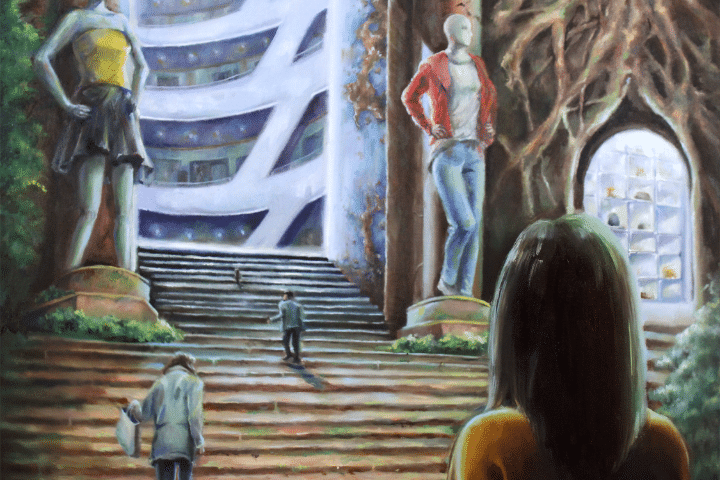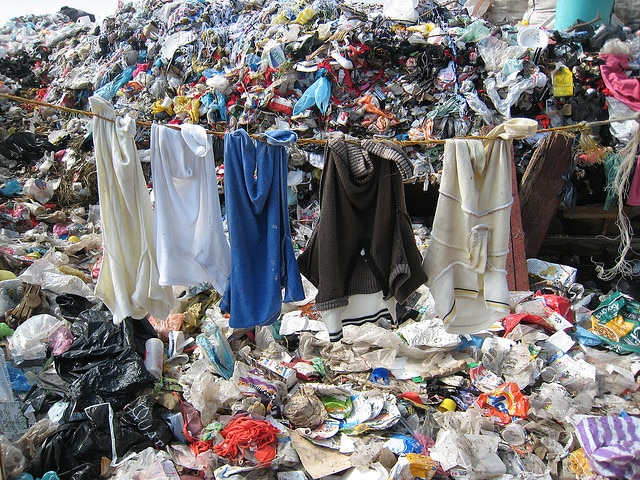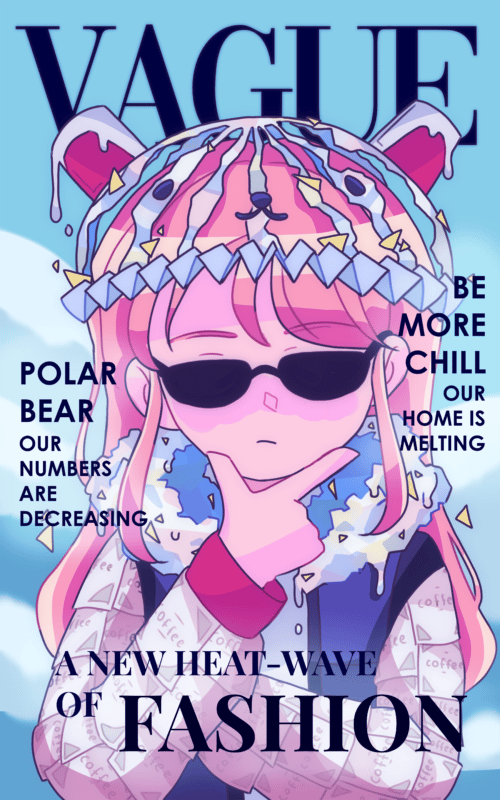
Mycelium Leather: Fungi, Fashion, and the Future
May 5, 2023By Ishan Kapur, 2023 Future Blue Youth Council member
Featured Image: “Modern Shopping” by Fangyijing (Jennifer) Huang (Irvine, CA)
A revolutionary new material is gaining traction in the fashion industry – mycelium leather. It’s vegan, carbon-neutral, and extremely durable. Mycelium leather is made from mycelium, the “root” structure from which mushrooms grow. Humans can grow mycelium in labs, through a process known as myco-fabrication, until they reach a density where they can be formed into other materials, such as those used for packaging. Its arrival in the fashion industry marks a new step towards sustainable consumption.

It is a known fact that the fashion industry is a significant contributor to environmental degradation. The production of clothing involves large amounts of water, energy, and raw materials, such as cotton and polyester, which can have harmful effects on the environment. In addition, the fabrics, dyes, and chemicals used in clothing production can pollute waterways and emit greenhouse gasses. The transportation of clothing across the world further exacerbates the industry’s impact on the environment. Overall, the fashion industry’s environmental impact is significant, and to solve this issue, we need to create goods that are more sustainable, profitable, yet still desirable to the consumer.
Mycelium leather has the potential to replace traditional leather and provide a sustainable and ethical alternative. Leather production is a major contributor to deforestation (as land is cleared to raise cattle), water pollution (as chemical runoff from the tanning process infiltrates waterways), and greenhouse gas emissions (as the leather is processed for use in factories). Mycelium leather, on the other hand, can be grown in a lab with minimal environmental impact. It also does not require the use of animal hides, which is a significant ethical consideration.

Chill Man, It’s Not That Serious by Faeara Sahelangi (Tangerang, Indonesia)
While vegan leather has been touted as a more sustainable alternative to traditional leather, it is often made from plastic materials like polyurethane, which is non-biodegradable and can cause microplastic pollution. Plastic microfibers from synthetic fabrics like vegan leather can make their way into the water supply. These microplastics are then consumed and absorbed by marine life, for whom they are toxic. By using natural materials like mycelium to make leather, we can reduce the amount of plastic waste generated by the fashion industry.
Moreover, while vegan leather may be a more affordable option, it is not as durable as mycelium leather. Mycelium leather is strong, flexible, and resistant to wear and tear. It does not crack or fade over time and is resistant to water and stains, making it an ideal material for use in fashion items. Because it is an organic material, it is 100% biodegradable and does eventually break down like any other natural fiber such as cotton or linen, though on a slower scale. It can even be composted!
One brand that has taken notice of mycelium leather’s potential is Hermes, a luxury brand known for its high-quality leather goods. Hermes is committed to sustainability. The brand has been working with mycelium leather for several years, and has recently unveiled a new line of bags made from the material.
Brands like Hermes are leading the way in showcasing the material’s potential, and it is likely that we will see more brands adopt mycelium leather in the coming years. With the rise of mycelium leather, the future of fashion is looking more sustainable and ethical than ever before.
If you would like to learn more about other potential uses for mycelium, check out Fixing the Future With Fungus: An Unsung Climate Solution by 2022 FBYC member, Brooke Nind.
